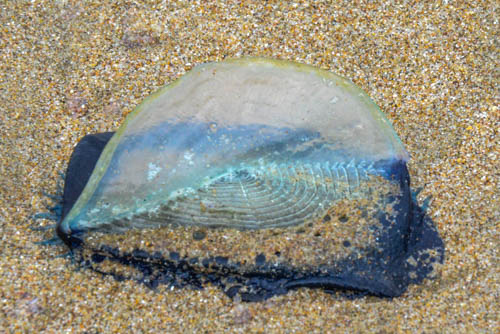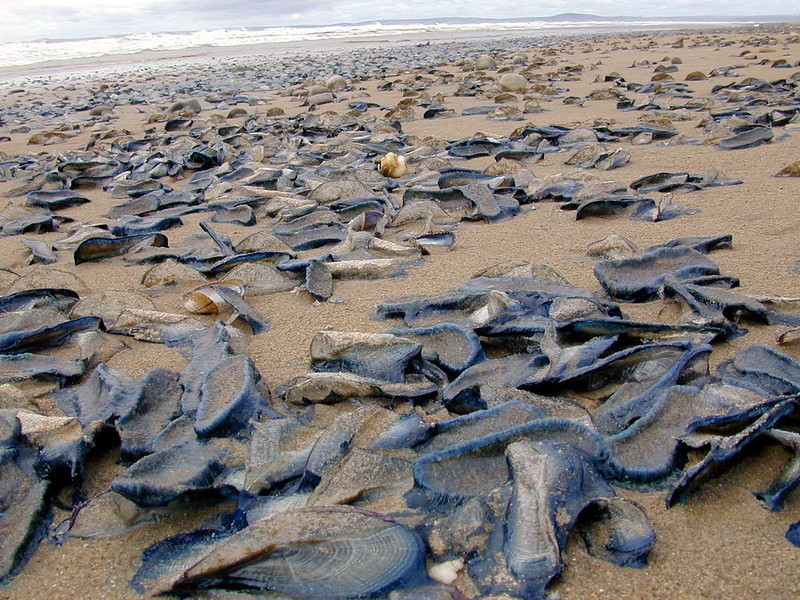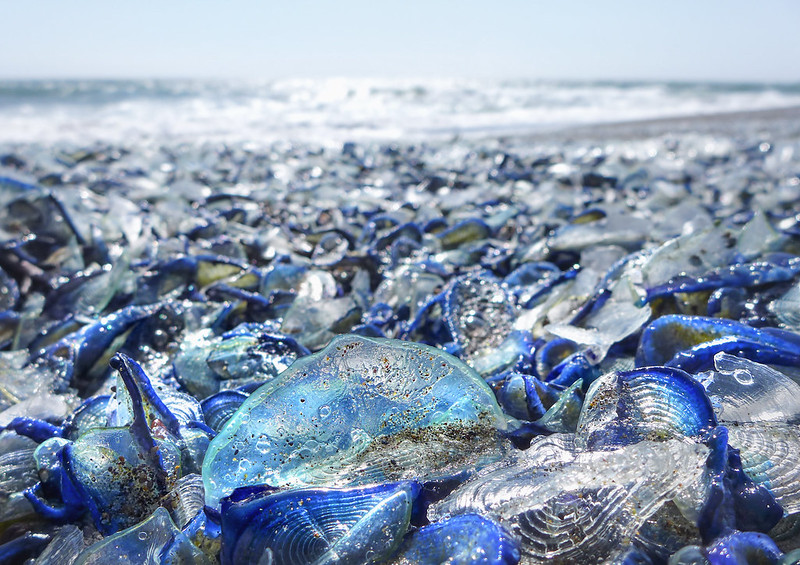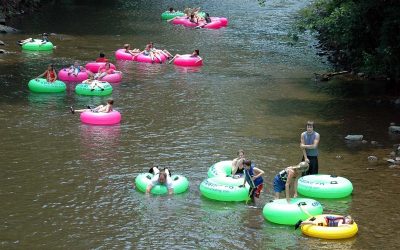You may have never heard of a velella before, but if you’re traveling to Cannon Beach or any of Oregon’s beaches in the next few days you may get a first-hand look at a lot of them.
Velella are also called “by-the-wind sailors” or “purple sailors” due to the discs they have on their backs that look like a small sail that helps them move through the water. They’re fairly small, about the size of a sand dollar, and live on the surface of the ocean, using the disc on the top of their body to catch the wind and migrate. This is actually the only way they’re able to travel since they’re invertebrates and can’t propel their own bodies. They live mostly on plankton, first using their tentacles to sting the plankton before consuming it.

These small, blue, jellyfish-like sea creatures have been swarming the Oregon coast for the last few weeks, but beachgoers have nothing to fear from them. That’s because unlike the jellyfish that they resemble (or the more dangerous man o’ war that lives in warmer waters), velella’s venom isn’t poisonous or harmful to humans. However, even though you’re probably safe to touch one, you should avoid it since some people may have a slight reaction. If you do touch one (and you really shouldn’t be touching dead animals in the first place), make sure you wash your hands afterwards and avoid touching your eyes and mouth. Also, though they’re mostly harmless, don’t walk barefoot through them or allow dogs or kids to run through piles of them.

Although there’s no predicting exactly when the velellas will come to the coast, it typically happens in the spring and summer in Oregon. Heavy winds and storms are usually the cause for blowing the velellas off course and landing them here in our backyard—sometimes as many as a million can wash ashore. When their bodies start piling up it’s natural for them to start smelling after a few days as any decomposing animal would, but they’ll soon dry up and get buried back into the sand.
So far the velellas have been spotted in Newport, Cannon Beach, Nehalem, Port Orford, and Seal Rock, but they're likely to show up all along the coast throughout summer.













